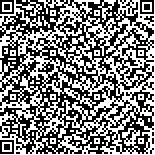| 引用本文: | 臧远芳,许丽丽,刘洪超,栾永福,徐兴燕,于雅萌,林永强.HPLC波长切换法测定莪术中8个主要有效成分的含量[J].中国现代应用药学,2021,38(18):2227-2233. |
| ZANG Yuanfang,XU Lili,LIU Hongchao,LUAN Yongfu,XU Xingyan,YU Yameng,LIN Yongqiang.Determination of 8 Main Active Compounds in Curcumae Rhizoma by HPLC Wavelength Switching Method[J].Chin J Mod Appl Pharm(中国现代应用药学),2021,38(18):2227-2233. |
|
| |
|
|
| 本文已被:浏览 1301次 下载 685次 |

码上扫一扫! |
|
|
| HPLC波长切换法测定莪术中8个主要有效成分的含量 |
|
臧远芳1, 许丽丽1,2, 刘洪超1, 栾永福1, 徐兴燕1, 于雅萌1, 林永强1
|
|
1.山东省食品药品检验研究院, 山东省中药标准创新与质量评价工程实验室, 济南 250101;2.山东中医药大学, 济南 250355
|
|
| 摘要: |
| 目的 建立HPLC同时测定莪术药材中8个主要有效成分(蓬莪术和温莪术的双去甲氧基姜黄素、去甲氧基姜黄素、姜黄素、莪术烯醇、莪术二酮、呋喃二烯酮、牻牛儿酮和呋喃二烯)的方法。方法 取样品粉末,以70%甲醇超声提取。采用Kromasil 100-5-C18(4.6 mm×250 mm,5 μm)色谱柱,以乙腈(A)-0.4%磷酸溶液(B)为流动相,梯度洗脱,流速1.0 mL·min-1;检测波长分别为426 nm和216 nm。再通过化学计量学分析蓬莪术和温莪术共有模式与成分差异。结果 双去甲氧基姜黄素、去甲氧基姜黄素、姜黄素、莪术二酮、莪术烯醇、呋喃二烯酮、牻牛儿酮和呋喃二烯的线性范围分别为3.90~155.9 μg·mL-1(r=0.999 6),3.52~140.9μg·mL-1(r=0.999 4),4.34~173.8 μg·mL-1(r=0.999 5),36.88~1 475.2 μg·mL-1(r=0.999 4),142.45~5 698 μg·mL-1(r=0.999 9),36.47~1 458.9 μg·mL-1(r=0.999 9),48.04~1 921.8 μg·mL-1(r=0.999 3),37.52~1 500.6 μg·mL-1(r=0.999 9);平均加样回收率(n=3)为99.4%~100.3%。20批药材测定结果显示蓬莪术中姜黄素类成分高于温莪术。化学计量学分析结果表明莪术二酮和呋喃二烯酮是蓬莪术和温莪术的重要差异成分。结论 所建立的方法符合方法学验证要求,可用于莪术药材的姜黄素类和倍半萜类成分的同时测定。 |
| 关键词: 莪术 姜黄素类 倍半萜类 高效液相色谱法 含量测定 |
| DOI:10.13748/j.cnki.issn1007-7693.2021.18.006 |
| 分类号:R284.1 |
| 基金项目:山东省重点计划项目(2020RKB24001);山东省药品监督管理局委托山东省中药材和饮片标准修订项目 |
|
| Determination of 8 Main Active Compounds in Curcumae Rhizoma by HPLC Wavelength Switching Method |
|
ZANG Yuanfang1, XU Lili1,2, LIU Hongchao1, LUAN Yongfu1, XU Xingyan1, YU Yameng1, LIN Yongqiang1
|
|
1.Shandong Institute for Food and Drug Control, Shandong Engineering Laboratory for Standard Innovation and Quality Evaluation of TCM, Jinan 250101, China;2.Shandong University of Traditional Chinese Medicine, Jinan 250355, China
|
| Abstract: |
| OBJECTIVE To establish an HPLC method for simultaneous quantitative determination of 8 characteristic compounds, including bisdemethoxycurcumin, demethoxycurcumin, curcumin, curcumenol, curdione, furanodienone, germacrone and furanodiene in Curcumae Rhizoma. METHODS The sample powder was ultrasonically extracted with 70% methanol. The analysis was performed on Kromasil 100-5-C18 column(4.6 mm×250 mm, 5 μm). The mobile phase consisted of acetonitrile(A) and 0.4% phosphoric acid solution(B) using a gradient elution, the flow rate was 1.0 mL·min-1. The peaks were monitored at both 426 nm and 216 nm. Then analyzed the common patterns and composition differences between Curcuma phaeocaulis and Curcuma wenyujin. RESULTS The linear range of bisdemethoxycurcumin, demethoxycurcumin, curcumin, curcumenol, curdione, furanodienone, germacrone and furanodiene were 3.90-155.9 μg·mL-1(r=0.999 6), 3.52-140.9 μg·mL-1(r=0.999 4), 4.34-173.8 μg·mL-1(r=0.999 5), 36.88-1 475.2 μg·mL-1(r=0.999 4), 142.45-5 698 μg·mL-1(r=0.999 9), 36.47-1 458.9 μg·mL-1(r=0.999 9), 48.04-1 921.8 μg·mL-1(r=0.999 3), 37.52-1 500.6 μg·mL-1(r=0.999 9). The average recoveries(n=3) were 99.4%-100.3%. As the results of determination of eight compounds of 20 batches of Curcumae Rhizoma showed:curcuminoids in Curcuma phaeocaulis were higher than that in Curcuma wenyujin. The results of chemometrics shows that curdione and furanodienone were the important distinguishing component between Curcuma phaeocaulis and Curcuma wenyujin. CONCLUSION This method is consistent with the method validation requirements, and can be used for the simultaneous determination of curcumins and sesquiterpenes in Curcuma Rhizoma. |
| Key words: Curcuma Rhizoma curcumins sesquiterpenes HPLC quantitative anaylysis |
|
|
|
|
